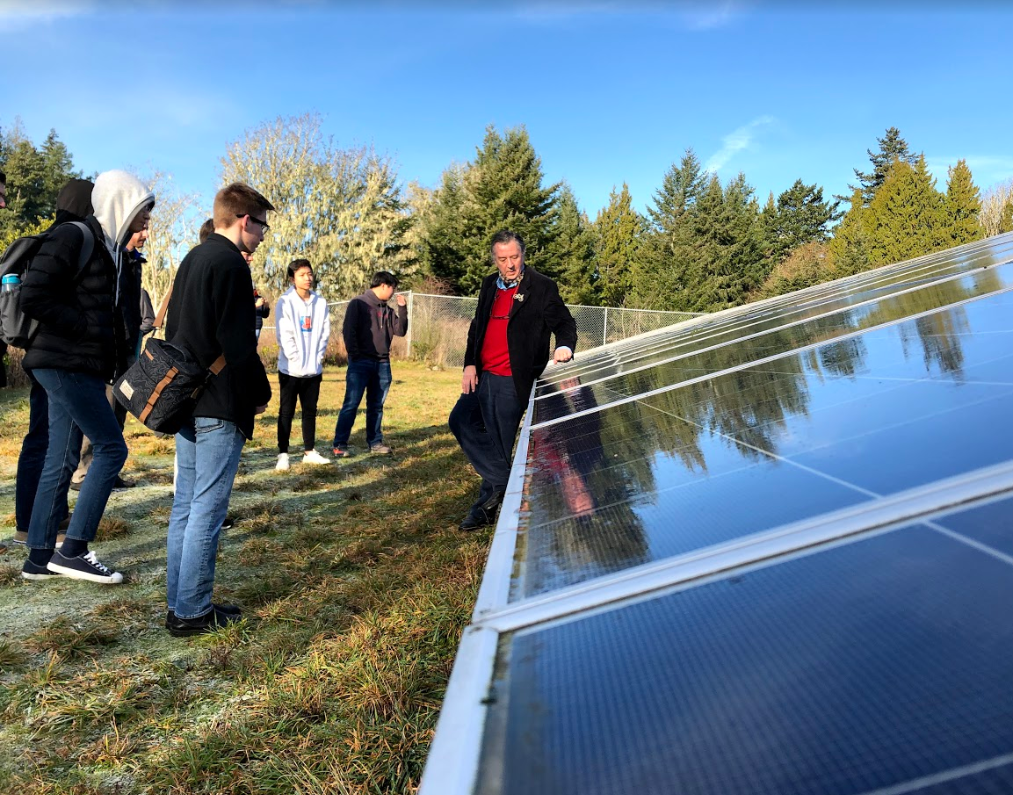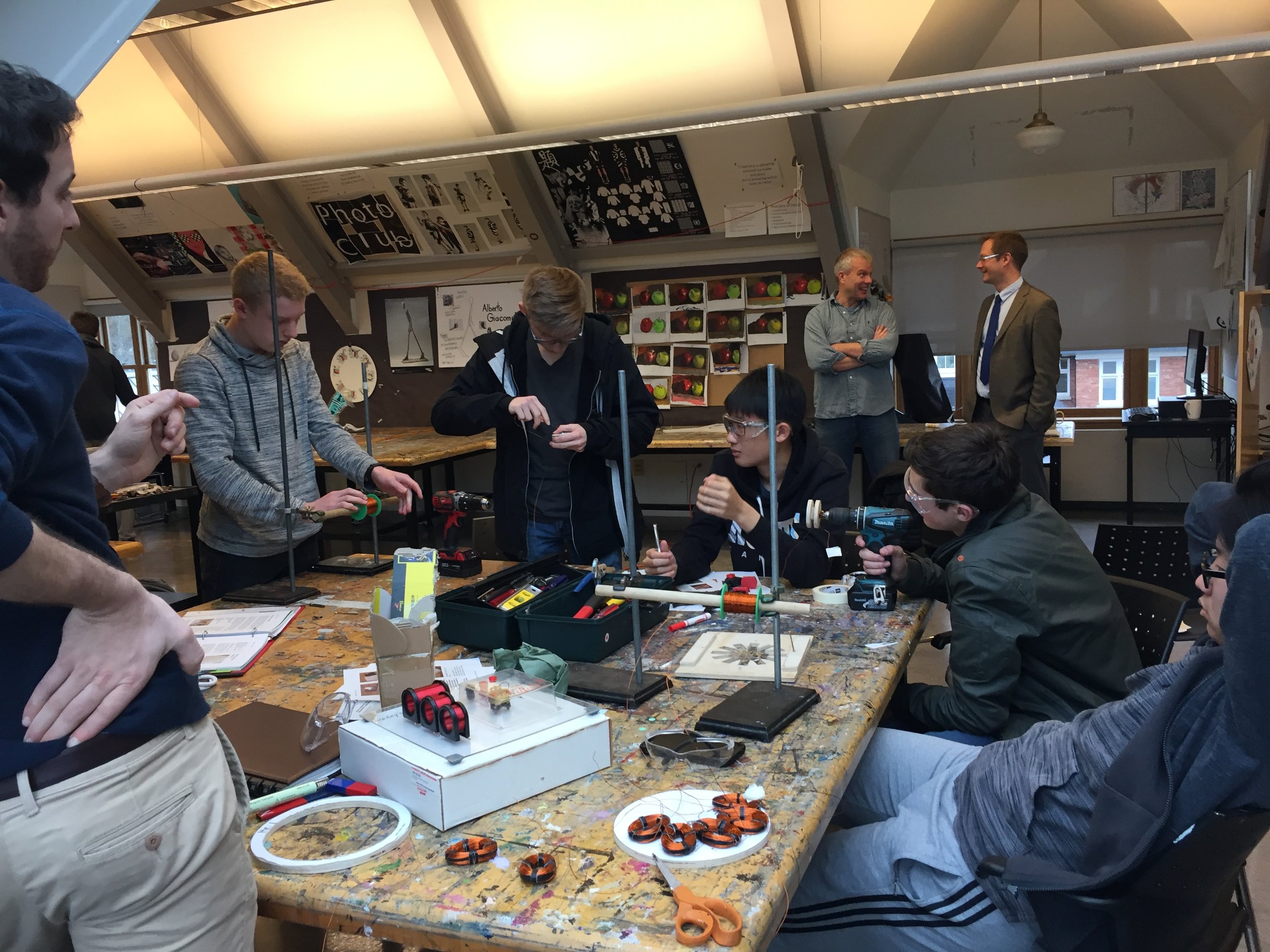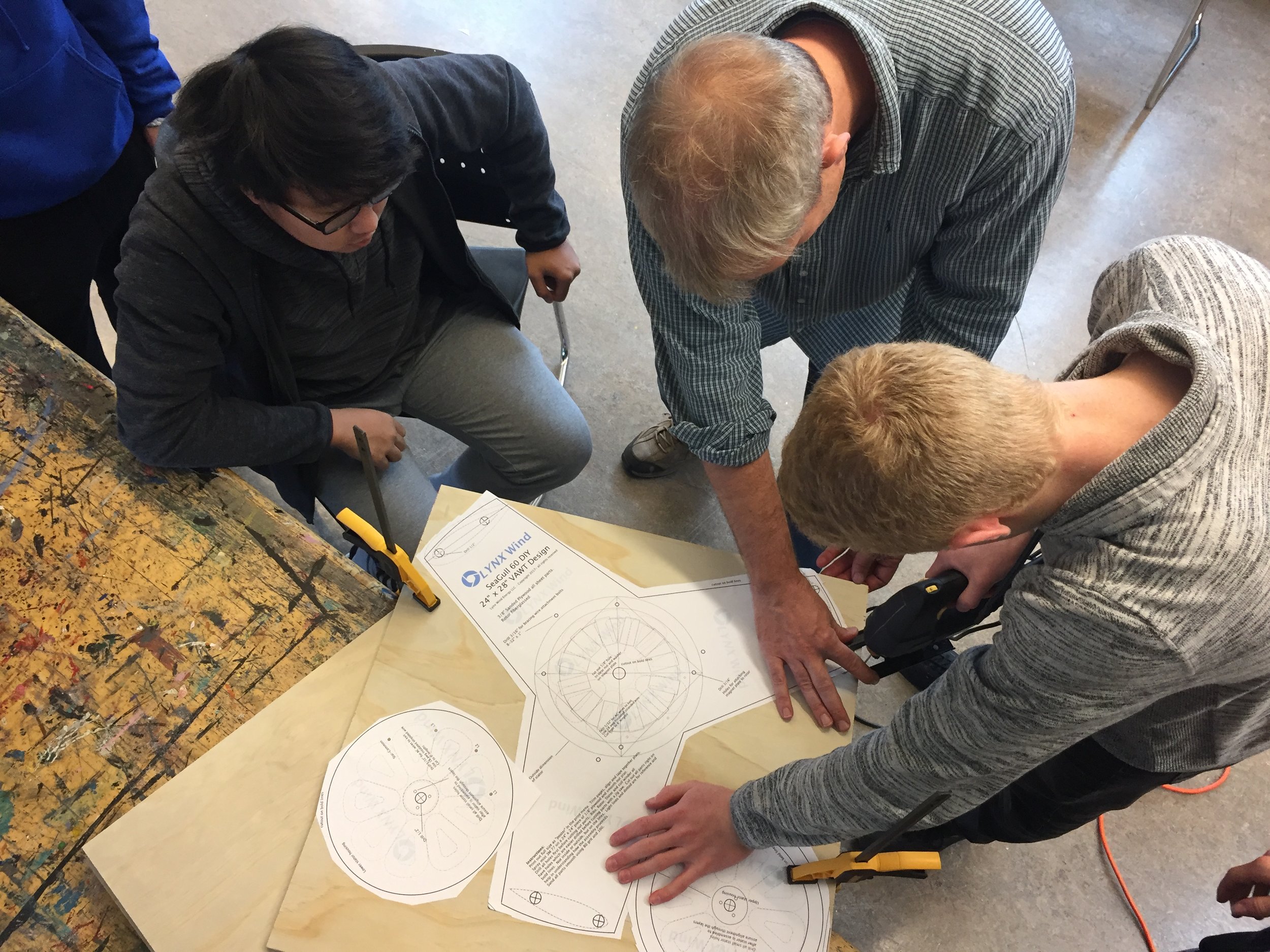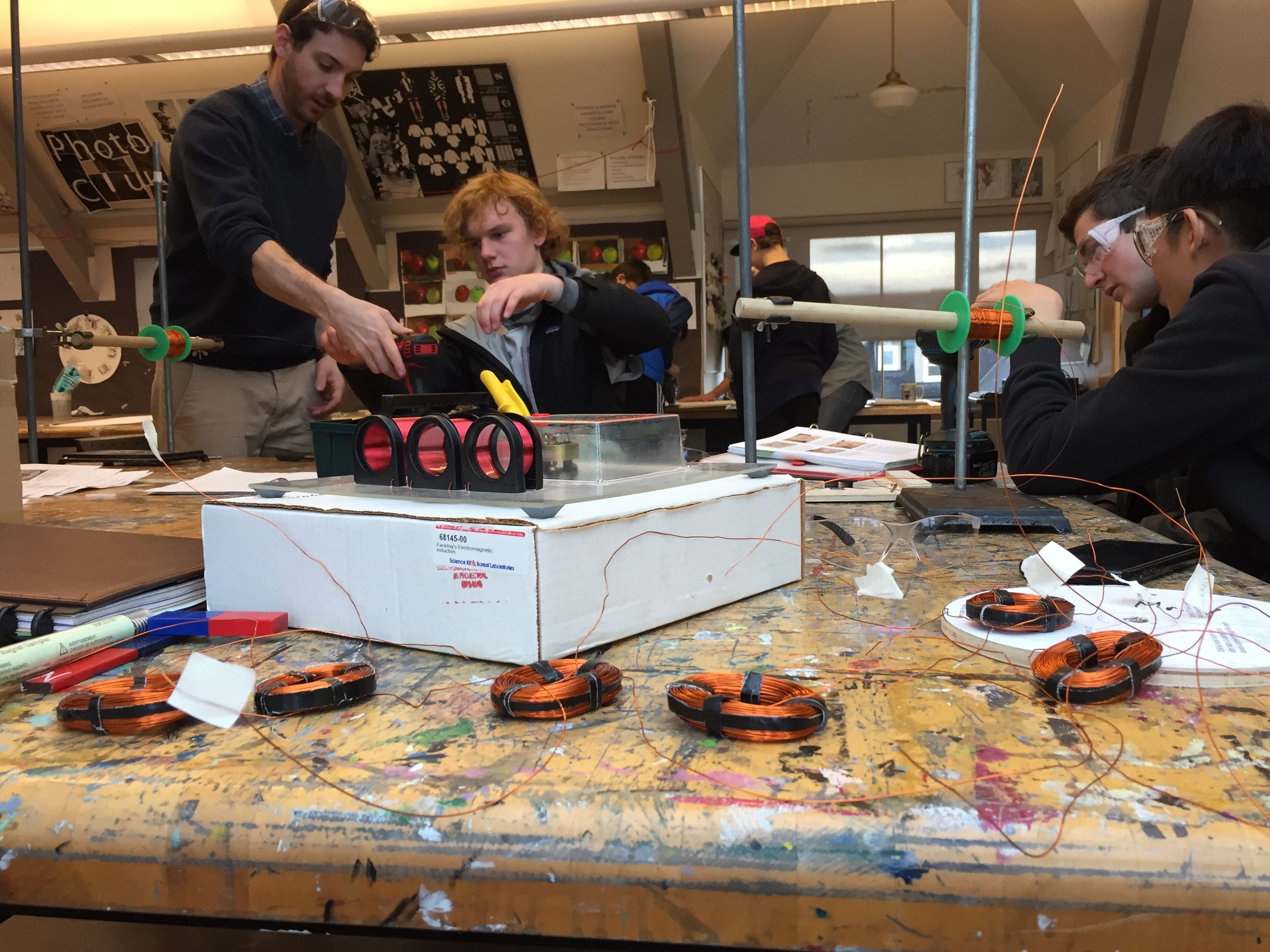



Words & Photos from Leo D. and Dewi W.
We all met in the morning at School and Mr. Donatelli and Mr. I told us we were going to Sooke. Everyone was quite excited, since we were supposed to go last time. The cohort leaders brought us to our two parked minivans, a black and a white Ford flex. We were greeted at the Sooke Solar project by the administrator of the power plant and he led us into a house. To start off a first nations lady purified our spirit by “bathing” us in the smoke of some burning herbs and then spraying us with holy water from all different places around the world. We then continued our visit by touring the battery storage. We were all expecting one huge battery, but it turns out they use 20 smaller sized batteries, like ones you would find in a motorboat. Quickly after we went to see the main solar cells array. There are many solar panels around the village, but they have main array of roughly 35 solar cells right on the water. According to our guide, in the summer they produce and huge excess of electricity that they sell to BC Hydro, but in the winter they can not produce enough electricity to satisfy their needs, so they buy electricity from BC Hydro, effectively not spending any money, because they are using the money they made by selling electricity to BC Hydro. Any household is allowed to do so. They can produce electricity with solar cells and sell it to BC Hydro. BC Hydro only allows you to sell electricity until so called “net zero”, which is that you sell all the excess electricity you produce, but only up until the point where you can equalize with the cost of the electricity that you have to buy when you can’t produce enough. Since T'Sou-ke Nation was one of the first to implement the technology, they have an agreement with BC Hydro, so they can make money off selling electricity.
During the tour we also learned that it is a gamble to invest in solar energy right now, because the cost of the solar cells drops lower every so often. Also, you can’t really predict how much money you will be able to make off selling energy (other than to BC Hydro, because they don’t really allow you to do so.
Another important thing I can clearly remember our guide saying is that before actually producing energy, the best thing you can and should do is to save energy. There are many ways to do so: turning off an excess of lights, using low power LEDs, not leaving the heater on while you’re away, etc. In fact 70% of the energy consumption in an average household is used by hot water and heating.
At this point we thanked our guide and headed for the cars, but not before having taken some beautiful pictures by the lake with the reflection of the mountains in the background and the houses mirrored on the water. I think we must have stayed there for five minutes before we went back to the car. On our way back, somehow all of my “cohort-mates” were sleeping. It was 12pm. Anyway, once we arrived back at school, we had a lunch break and then went to the arts lab to finish up what we had not finished last expedition day. One group went to finish coiling up the copper wire. Another one set up the frames for the wind turbines. Jan and I decided to do some soldering work with Mr. England and soldered all the coils together. It took way longer than you can probably imagine. After these last tasks, the only thing that’s left is to pour the resin in the stamps and we should be done with our turbines! I can’t wait to see them in action next expedition day!